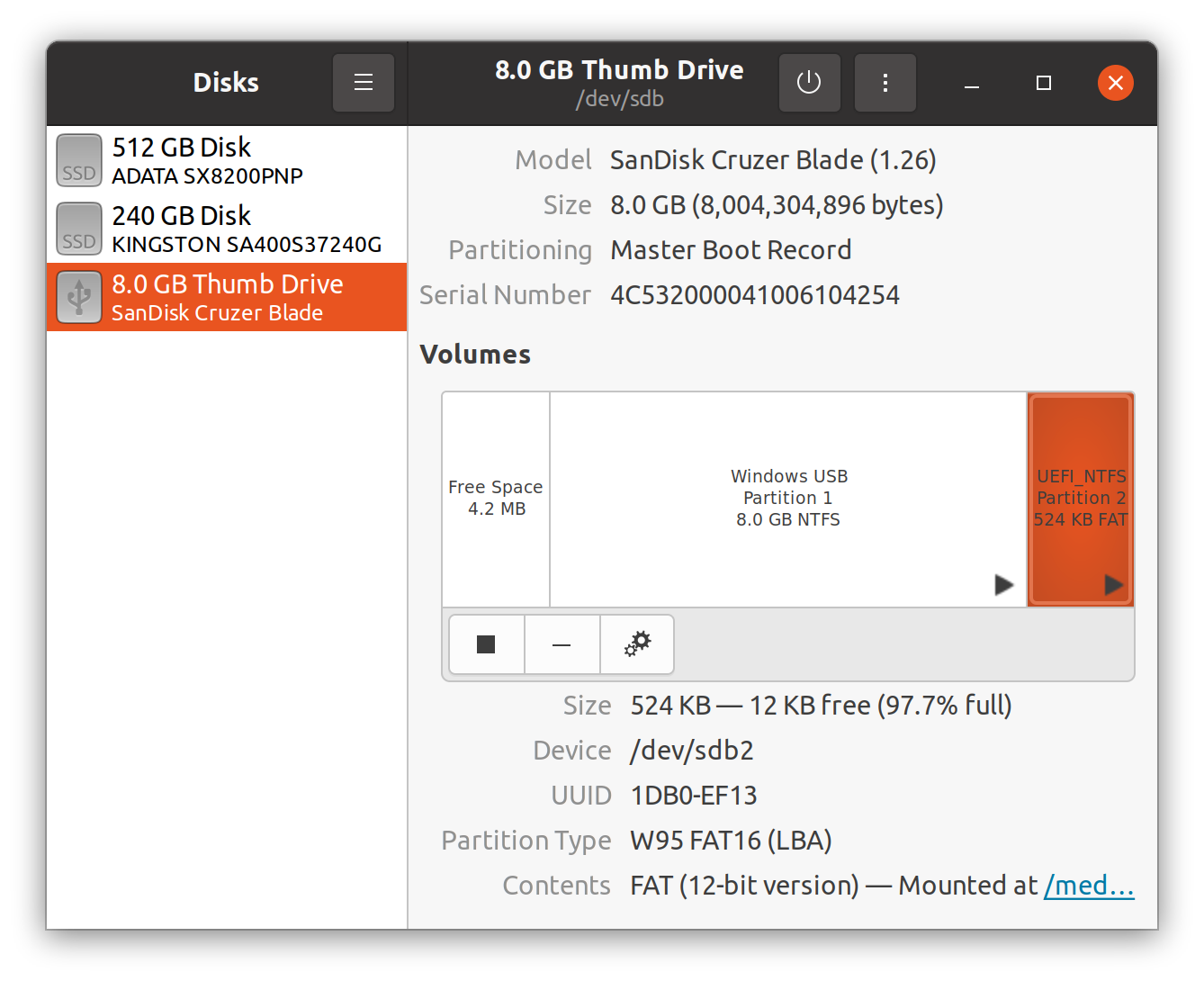

- WINDOWS 10 USB TOOL LINUX INSTALL
- WINDOWS 10 USB TOOL LINUX UPDATE
- WINDOWS 10 USB TOOL LINUX MANUAL
- WINDOWS 10 USB TOOL LINUX WINDOWS 10
- WINDOWS 10 USB TOOL LINUX ISO
This means your USB stick is either corrupted or unbootable itself, or USB boot is not supported on the computer.īootable USB not showing up in BIOS.
WINDOWS 10 USB TOOL LINUX WINDOWS 10
There are some other reasons may cause Windows 10 not booting from USB, please refer to the following scenarios:īootable USB is not detected as a boot device. And usually, BIOS boot mode requires NTFS file system while UEFI (CSM disabled) requires FAT32. Specifically, most of the old computer models supports Legacy BIOS while the modern computer like Windows 8/10 uses UEFI boot mode. Windows 10 bootable USB not working issue may be caused by wrong boot mode or file system. If you happen to be in a similar situation, you could stay for a while to learn more about Windows 10 bootable USB not working and then fix the error with given solutions. I've tried changing boot order, or manually selecting USB with no positive result. When I try booting from USB, the laptop ignores it and continues booting Windows.
WINDOWS 10 USB TOOL LINUX ISO
I've formatted the USB (tried MBR and GPT), and restored the ISO using Windows 7 USB/DVD Download Tool.

WINDOWS 10 USB TOOL LINUX INSTALL
You should now be able to boot to your Windows install media.I'm having problem with my Toshiba L875-S7308 where I cannot boot my USB while in UEFI mode. Remove the folders rm -rf ~/winiso ~/winusb Then unmount the devices sudo umount ~/winiso ~/winusb Next thing is to move out of the winiso folder cd When all data is flushed to the device you will be returned to the prompt. When the copy is done ensure all data is flushed to the device using the sync command sync The copy operation is going to take a long time depending on your USB port speed and your USB device. Mount the partition (replace sdy with device letter from above) sudo mount /dev/sdy1 ~/winusbĬopy all files from ISO to USB cd ~/winiso Mount your ISO sudo mount -o loop /path/to/windows/iso/filename.iso ~/winisoĬreate a folder to mount your USB mkdir ~/winusb sudo mkfs.ntfs /dev/sdX1Ĭreate a folder to mount your ISO mkdir ~/winiso Format the device using exfat or ntfs (replace sdy with device letter from above) to overcome the size limitation of FAT32. Newer versions of Windows 10 ISO contains a file bigger than 4G.

sudo dd if=/dev/zero of=/dev/sdy bs=1M count=10 oflag=sync In the terminal clear the disk of any partition info, using this command (replace sdy with device letter from above). If you only have one disk then it probably will be /dev/sdb. Insert your USB stick and list your devices one more time lsblk -la Remove all removable devices (USB), open a terminal and list known disk devices lsblk -la

Install the ventoy package from repo sudo pacman -S ventoy The ventoy utility is a great tool for booting a Windows ISO without having to jump through the hoops in this guide. Very receently a new tool has become available - the ventoy project - which makes the task even easier. Thanks to his work the Linux community have an app to do abstract the CLI work.
WINDOWS 10 USB TOOL LINUX MANUAL
Only the manual approach described below was viable - until af few years ago when the github user slacka forked the WinUSB project. If you want to reinstall Windows after your Manjaro adventure get a Windows ISO from Microsoft
WINDOWS 10 USB TOOL LINUX UPDATE
To update you system firmware you can use a Windows PE environment like Hiren's BootCD Hirens BootCD reinstalling Windows but it could also be to update your system firmware - because the vendor only provided Windows binaries - you need a Windows system. The reason for needing this could be e.g. Creating a bootable USB from a Windows ISO


 0 kommentar(er)
0 kommentar(er)
